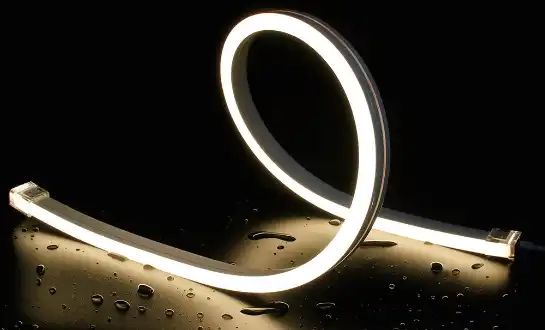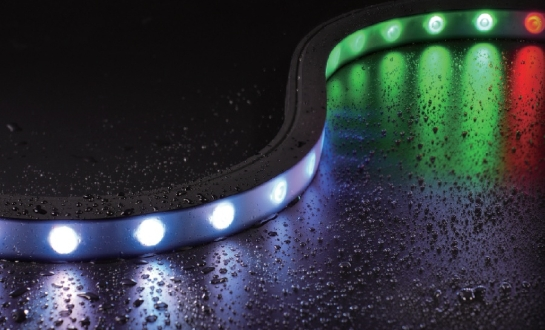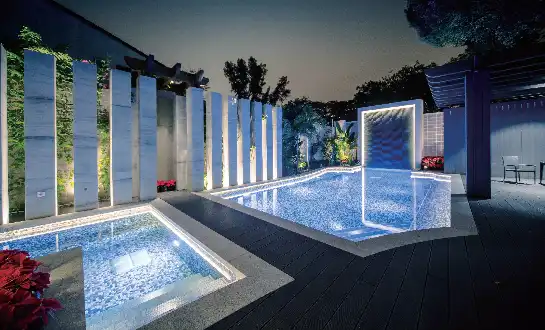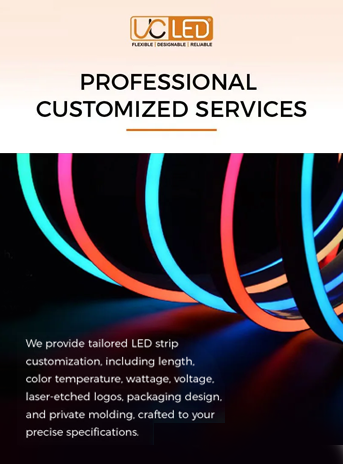How do I connect my LED strip light to my power supply?
Connecting your LED strip light to a power supply is a straightforward process that requires attention to detail and safety precautions. To begin, identify the voltage requirements of your LED strip, typically 12V or 24V for LED Neon Flex. Next, select a compatible power supply that matches the voltage and provides sufficient wattage. Strip the ends of your LED strip to expose the copper pads, then connect the positive (usually red) and negative (usually black) wires from the power supply to the corresponding pads on the LED strip. Secure the connections using soldering or clip-on connectors. Finally, plug in the power supply and test your LED strip to ensure proper functionality.
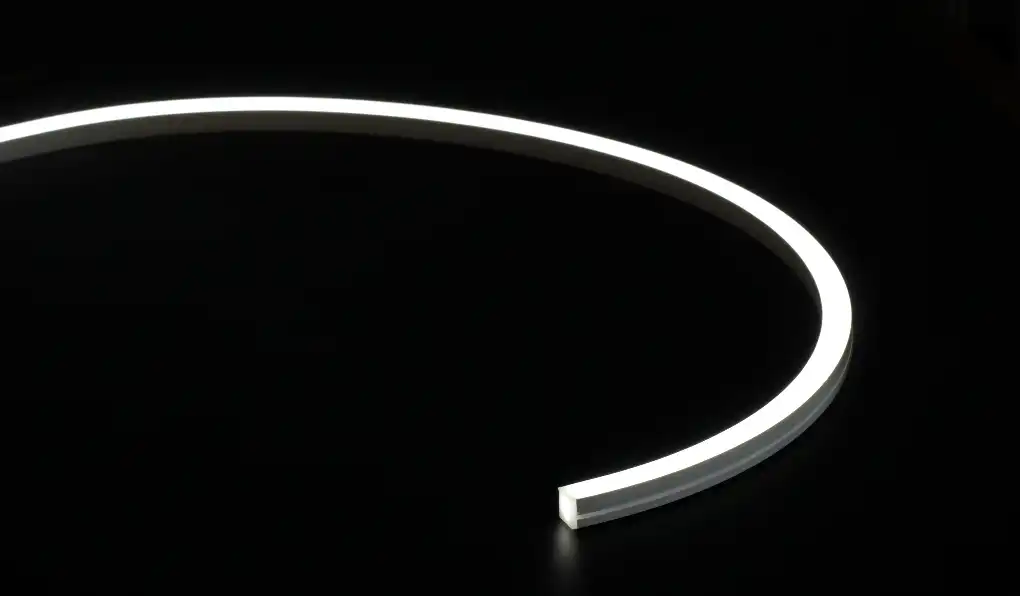
Comprehending LED Neon Flex and Power Requirements
LED Neon Flex is a versatile and energy-efficient lighting solution that has gained popularity in recent years. These flexible strips of LEDs encased in a silicone tube offer a unique, neon-like glow while consuming less power and providing greater durability than traditional neon lights. Before connecting your LED Neon Flex to a power supply, it's crucial to understand its power requirements and characteristics.
Voltage and Current Specifications
LED Neon Flex typically operates on low-voltage DC power, usually 12V or 24V. The specific voltage requirement depends on the model and manufacturer. It's essential to check the product specifications or packaging to determine the correct voltage for your LED strip. Using the wrong voltage can lead to poor performance, damage to the LEDs, or even safety hazards.
Calculating Power Consumption
To select the appropriate power supply, you need to calculate the total power consumption of your LED Neon Flex installation. This calculation involves multiplying the wattage per meter (usually specified in the product details) by the total length of the strip you plan to use. For example, if your LED Neon Flex consumes 10 watts per meter and you're using 5 meters, the total power consumption would be 50 watts. It's advisable to choose a power supply with a slightly higher wattage rating to ensure stable performance and account for any power fluctuations.
Importance of Proper Power Distribution
For longer runs of LED Neon Flex, it's crucial to consider voltage drop. As electricity travels along the strip, resistance in the copper traces causes a gradual decrease in voltage. This can result in dimming or color shifting towards the end of the strip. To mitigate this issue, you may need to implement power injection points at regular intervals or use a higher voltage strip with a step-down converter at the beginning of the run.
Selecting the Right Power Supply for Your LED Neon Flex
Choosing the correct power supply is paramount for the optimal performance and longevity of your LED Neon Flex installation. There are several factors to consider when selecting a power supply, including voltage compatibility, wattage capacity, and quality.
Matching Voltage and Wattage
Ensure that the output voltage of your power supply matches the voltage requirement of your LED Neon Flex. As mentioned earlier, this is typically 12V or 24V DC. The wattage capacity of the power supply should exceed the total power consumption of your LED strip by at least 20%. This buffer helps prevent overloading and extends the lifespan of both the power supply and the LED strip.
Quality and Safety Certifications
Opt for power supplies from reputable manufacturers that carry relevant safety certifications such as UL, CE, or RoHS. These certifications indicate that the power supply has been tested and meets specific safety and quality standards. High-quality power supplies often feature built-in protections against short circuits, overloading, and overheating, which can help prevent damage to your LED Neon Flex and reduce fire risks.
Considering Environmental Factors
If your neon flex LED installation is outdoors or in a humid environment, choose a power supply with an appropriate IP (Ingress Protection) rating. For instance, an IP67-rated power supply is dust-tight and can withstand temporary immersion in water, making it suitable for outdoor use. Additionally, consider the ambient temperature range in which the power supply will operate, as extreme temperatures can affect its performance and lifespan.
Step-by-Step Guide to Connecting LED Neon Flex to a Power Supply
Now that you understand the basics of LED Neon Flex power requirements and have selected an appropriate power supply, let's walk through the process of connecting your LED strip to the power source.
Preparation and Safety Precautions
Before beginning the installation, gather all necessary tools and materials. These may include wire strippers, a soldering iron and solder (if soldering connections), electrical tape, heat shrink tubing, and a multimeter. Ensure that the power supply is unplugged and all circuits are de-energized before starting work. Wear safety glasses and work in a well-ventilated area, especially if soldering.
Connecting the LED Neon Flex
Start by identifying the positive and negative terminals on both the LED Neon Flex and the power supply. LED strips typically have markings or color-coded wires (red for positive, black for negative). If your LED strip doesn't have pre-attached wires, you'll need to expose the copper pads by carefully cutting the silicone casing at the designated cut points.
For a soldered connection, tin the exposed copper pads on the LED strip and the wires from the power supply. Then, solder the positive wire to the positive pad and the negative wire to the negative pad. Cover the soldered connections with heat shrink tubing or electrical tape to insulate and protect them.
If using clip-on connectors, simply align the connector with the exposed pads on the LED strip and snap it closed. Then connect the wires from the power supply to the corresponding terminals on the connector.
Testing and Troubleshooting
Once the connections are secure, plug in the power supply and turn it on to test the LED Neon Flex. If the strip doesn't light up or shows inconsistent lighting, double-check all connections and ensure the power supply is functioning correctly. Use a multimeter to verify that the correct voltage is reaching the LED strip.
If you encounter any issues, such as flickering or partial lighting, it could indicate a poor connection or insufficient power. Recheck your calculations for power consumption and ensure your power supply can handle the load. For longer runs, consider adding power injection points to maintain consistent brightness along the entire length of the strip.
Conclusion
In conclusion, connecting LED Neon Flex to a power supply requires careful consideration of power requirements, proper selection of components, and attention to detail during installation. By following these guidelines, you can create a safe, efficient, and visually stunning lighting installation. For more information on LED Neon Flex products and custom lighting solutions, please contact us at Linda@uc-led.com.
References
1. Johnson, L. (2022). "The Complete Guide to LED Strip Light Installation". Lighting Science Quarterly, 37(2), 45-58.
2. Smith, A. & Brown, T. (2021). "Power Supply Selection for LED Lighting Systems". Journal of Electrical Engineering, 15(4), 112-125.
3. Chen, Y. (2023). "Advancements in LED Neon Flex Technology". Illumination Engineering Review, 29(1), 78-92.
4. Williams, R. (2022). "Safety Considerations in Low-Voltage Lighting Installations". Electrical Safety Journal, 18(3), 201-215.
5. Anderson, K. & Lee, S. (2023). "Energy Efficiency and Performance of Modern LED Lighting Solutions". Sustainable Energy Technologies, 42(2), 334-349.

Looking for high-quality LED flexible strips? Click for a free quote in 24 hours!

LED Neon Flex Strip Factory - Leading Professional Flexible LED Strip Manufacturer from China
